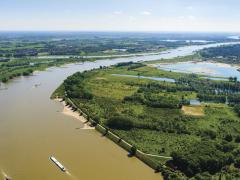Lessons learned from spatial planning in the Netherlands. In support of integrated landscape initiatives, globally.
Experiences with different government styles can provide lessons on choosing an optimal approach in other contexts and situations. This study illustrates the role of spatial planning in landscape management and development in the Netherlands. It is part of a PBL research project on exploring Integrated Landscape Management as a potential means of achieving progress on multiple sustainable development goals simultaneously.
The study presents some insights derived from key moments and policy changes in the Netherlands and reflects on the challenges ahead, signifying that, also in the Netherlands, spatial and landscape planning are dynamic processes that anticipate and adapt to changes in society. It discusses the landscape planning policy and practice of the last three decades, since its approach shifted from a sectored to a more integrated approach. The first part of that period was characterised by a hierarchical governance style that gradually transformed into network-oriented governance. These two ways of governance were characterised by different types of spatial planning policies and, consequently, had a different impact on landscape management. The study illustrates the changes in steering style by using two spatial scales: national and regional.
The main target audience for this study consists of policymakers and stakeholders involved in the landscape initiatives in partner countries of the Netherlands or via the Landscapes for People Food and Nature (LPFN) initiative, the NLandscape.nl platform and/or other integrated landscape programmes globally.
Lessons learned from hierarchical governance
This type of governance was top-down, supported by stringent legislative and financial instruments that made policy implementation relatively easy. It was directed to development control planning. This planning style was favoured by many spatial planners. Experience has shown that:
- A stable and long-term-oriented policy on spatial planning is seen as an important foundation for preserving spatial quality and maintaining regional economic stability.
- Long-term protection and promotion of landscape values raises awareness among citizens and entrepreneurs about the need for a more integrated perspective.
- Hierarchical planning on a national level controls the quality of large-scale projects of supra-regional importance.
But hierarchical governance also had its negative sides; it was criticised for its ‘blueprint’ way of planning which proved to be rigid in its response to political changes and societal needs.
During the 1980s, a new approach to spatial planning emerged: Development planning. Although still retaining most of the features of hierarchical governance, development planning was more sensitive to social dynamics, had decentralised implementation, paid attention to economics, included citizen participation and cooperation between public and private actors.
During the past 10 years many national governmental functions were decentralised to provinces, top down landscape planning policy was deregulated and network governance now determines spatial planning.
Lessons learned from a networking way of governance
The ambition of the Dutch Government’s network planning style is to achieve shared responsibility on spatial quality, in terms of both finance and legislation. To facilitate the integration, all related legislation has been combined under one law: the Environment and Planning Act (Omgevingswet). Network governance in spatial planning in the Netherlands is still a relatively new, dynamic and ongoing process; therefore, it is too early to draw hard conclusions on its success or failure. The current situation is that:
- the role of the national government has shifted from governing to stimulating and facilitating the planning processes of regional and local authorities, while remaining closely involved in managing supra-regional spatial developments.
- although citizens and NGOs play an important role in these projects, they are always supported by governmental measures, such as on funding, compensation or legislation.
- the number of integrated landscape management initiatives by citizens and private sector has increased over the past decade. Compared to the larger number of initiatives by the government in the days of hierarchical governance, there is still room for improvement. The new initiatives tend to cover a smaller scale or area.
- integral projects are inherently complex, which is why government authorities are continually trying to simplify rules and regulations and provide more transparency. This transformation requires the support of municipalities, potentially adding to their already increasing workload and responsibility.
Supporting landscape initiatives, on a global level
Recent decentralisation of spatial-planning-related policies have clearly put more pressure and responsibility on regional and local authorities. This requires sufficient funding and expertise for policy implementation. In addition, regional and local authorities should be able to create a level playing field for all stakeholders to participate in the planning process.
Authors
Specifications
- Publication title
- Lessons learned from spatial planning in the Netherlands. In support of integrated landscape initiatives, globally.
- Publication date
- 19 November 2018
- Publication type
- Publication
- Publication language
- English
- Product number
- 3279




